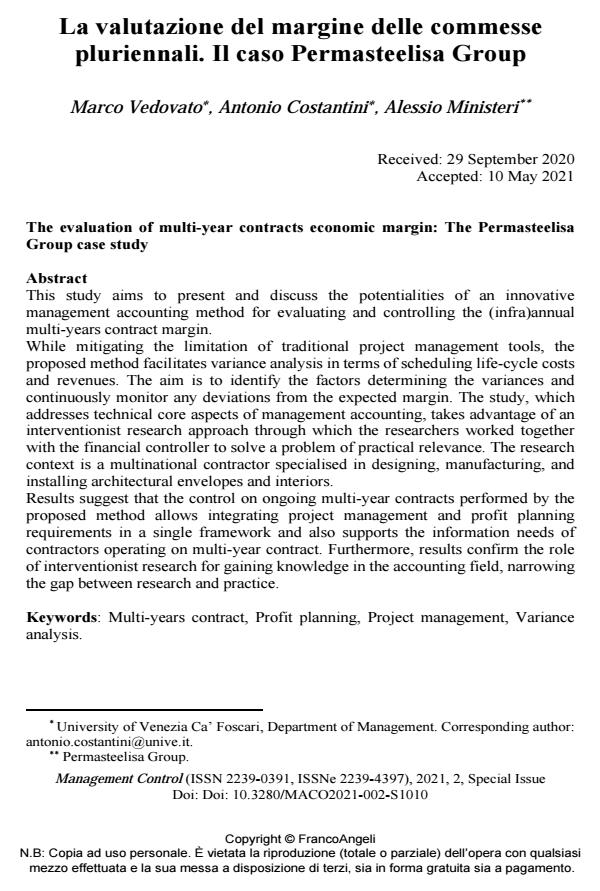The evaluation of multi-year contracts economic margin: The Permasteelisa Group case study
Journal title MANAGEMENT CONTROL
Author/s Marco Vedovato, Antonio Costantini, Alessio Ministeri
Publishing Year 2021 Issue 2021/suppl. 2
Language Italian Pages 26 P. 215-240 File size 344 KB
DOI 10.3280/MACO2021-002-S1010
DOI is like a bar code for intellectual property: to have more infomation
click here
Below, you can see the article first page
If you want to buy this article in PDF format, you can do it, following the instructions to buy download credits

FrancoAngeli is member of Publishers International Linking Association, Inc (PILA), a not-for-profit association which run the CrossRef service enabling links to and from online scholarly content.
This study aims to present and discuss the potentialities of an innovative management accounting method for evaluating and controlling the (infra)annual multi-years contract margin. While mitigating the limitation of traditional project management tools, the proposed method facilitates variance analysis in terms of scheduling life-cycle costs and revenues. The aim is to identify the factors determining the variances and continuously monitor any deviations from the expected margin. The study, which addresses technical core aspects of management accounting, takes advantage of an interventionist research approach through which the researchers worked together with the financial controller to solve a problem of practical relevance. The research context is a multinational contractor specialised in designing, manufacturing, and installing architectural envelopes and interiors. Results suggest that the control on ongoing multi-year contracts performed by the proposed method allows integrating project management and profit planning requirements in a single framework and also supports the information needs of contractors operating on multi-year contract. Furthermore, results confirm the role of interventionist research for gaining knowledge in the accounting field, narrowing the gap between research and practice.
Keywords: Multi-years contract, Profit planning, Project management, Variance analysis.
Marco Vedovato, Antonio Costantini, Alessio Ministeri, La valutazione del margine delle commesse pluriennali. Il caso Permasteelisa Group in "MANAGEMENT CONTROL" suppl. 2/2021, pp 215-240, DOI: 10.3280/MACO2021-002-S1010